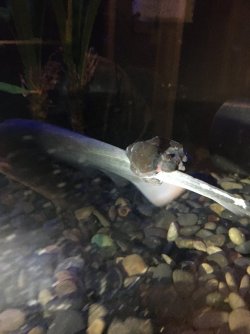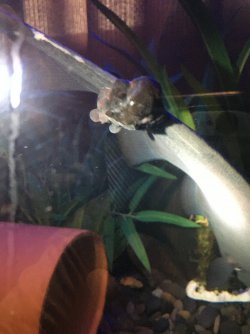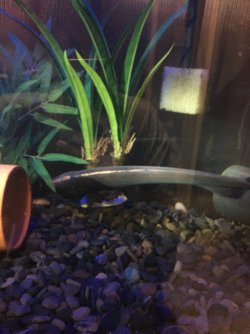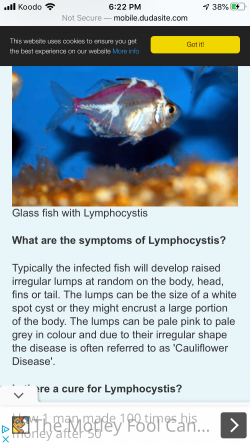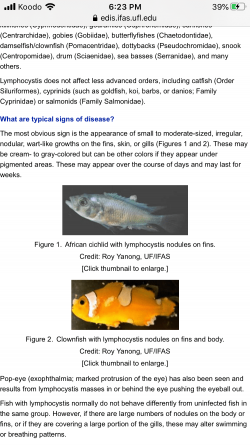Sympledom
New Member
Please help  Vincent is a 7yo black ghost knife in a 75 gal two over the back filters (I know canister is more optimal) all alone (I know this is the absolute minimum size but for now let’s just make him better) 28/29cel
Vincent is a 7yo black ghost knife in a 75 gal two over the back filters (I know canister is more optimal) all alone (I know this is the absolute minimum size but for now let’s just make him better) 28/29cel
Nutrafin waste control as recommended
Gh around 180
Kh around 60
Ph 6.5-7
No2 0
No3 160
I have been dealing with his nitrates, going to try not feeding blood worms daily to help with the waste levels (has been fed frozen bloodworms everyday for 7 years, almost always eats them all) have been doing prime and water changes weekly, I honestly wasn’t doing regular water changes until I moved him into his 75gal in the fall so 4 months ago. But my worry right now is this tumour I don’t know what to do to help him, the skin sloughs off and it just gets bigger. Any advice would be helpful! I know getting his water back to where it should be will help with healing so I am trying to do that, but also trying not to do too much at the same time and stress him out.
I don’t know what to do to help him, the skin sloughs off and it just gets bigger. Any advice would be helpful! I know getting his water back to where it should be will help with healing so I am trying to do that, but also trying not to do too much at the same time and stress him out.
He has had two small tumours for several years, it was just recently that the one that is now giant ruptured or something? So I filed his pvc pipes, took out a new ornament that could potentially rip it open... and now I’m not sure what else I can do
Nutrafin waste control as recommended
Gh around 180
Kh around 60
Ph 6.5-7
No2 0
No3 160
I have been dealing with his nitrates, going to try not feeding blood worms daily to help with the waste levels (has been fed frozen bloodworms everyday for 7 years, almost always eats them all) have been doing prime and water changes weekly, I honestly wasn’t doing regular water changes until I moved him into his 75gal in the fall so 4 months ago. But my worry right now is this tumour
He has had two small tumours for several years, it was just recently that the one that is now giant ruptured or something? So I filed his pvc pipes, took out a new ornament that could potentially rip it open... and now I’m not sure what else I can do


